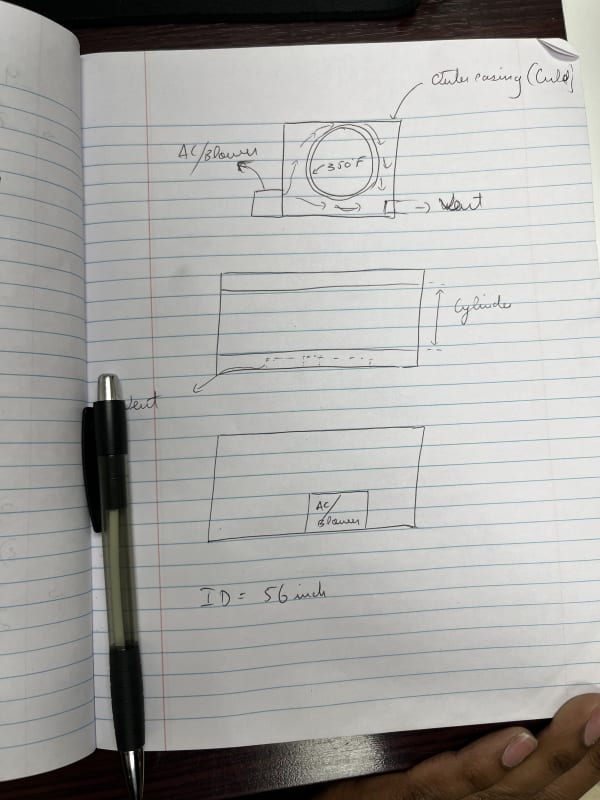Regardless, you really don't have many options
> Refrigeration unit to cool inlet temp closer to 0 degF -- that seems absurd, since it'll likely be several times the volume of your box and probably require more maintenance, although, transferring the maintenance risk to something that has to stay online might be worth it.
> MASSIVELY increase the size of the fans -- but reliability/noise/vibration will get worse
> Attach fins to the cylinder to massively increase the exchange surface area -- this seems the simplest thing, assuming it hasn't already been done
you got an ostensible 80 degF drop with your existing setup, so that's doing pretty well and I would focus on that, rather than the supposed power consumption, since the deltaT is a measured fact and does not assume any data not in evidence, other than a presumed 350 degF apparent source temperature. Using that, doubling the efficiency of whatever is doing the heat transfer will hypothetically get you to the desired surface temperature, such as doubling the heat transfer area or doubling the air flow, or dropping the inlet air temp to 0 degF. You just have to pick your poison and live with the consequences.
TTFN (ta ta for now)
I can do absolutely anything. I'm an expert!
faq731-376 forum1529 Entire Forum list


